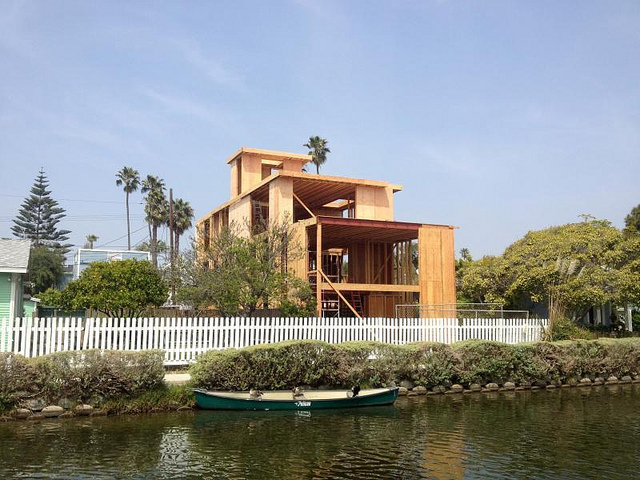Building? Be Sure to Pick the Right Home Site
 Location, location, location! Those are the watchwords of the real estate industry, where prospective homebuyers are cautioned to consider a huge number of potential factors when they set out to purchase, or build, a home. Homesites represent a particularly great opportunity because your construction company can create the home of your dreams, so you don't have to compromise on the features you want.
Location, location, location! Those are the watchwords of the real estate industry, where prospective homebuyers are cautioned to consider a huge number of potential factors when they set out to purchase, or build, a home. Homesites represent a particularly great opportunity because your construction company can create the home of your dreams, so you don't have to compromise on the features you want.
But you can also get into a lot of trouble if you buy the wrong lot. You may already be considering issues like the size and shape of the lot, as well as the distance to work and school, school district the lot is set in, availability of municipal services, level of ambient noise and light, and proximity to industrial facilities, but have you thought about the environmental factors? They might get left out of your lot selection and building process if you're not careful.
Our ancestors invested a great deal of energy in finding auspicious homesites and situating homes in the optimal way for good luck, good fortune, and success. While you might not hold with the belief that the positioning of your home on your lot is important for your future prospects, and you definitely don't want to call in an haruspexv to slaughter a goat and read your future in the entrails, you might want to think about some environmental issues associated with the lots you're considering so you can make the best choice.
How clean is the air? Homes set higher up tend to have more ambient breezes to keep air circulation steady, and they're also above air inversions. Contrast a home in the Oakland Hills with a home in West Oakland, for example; one is high above the Bay and misses out not just on fog but also smog and pollutant-filled days. You should also avoid sites situated near factories and facilities where toxins are handled -- or where they once were handled, as your soil could be contaminated.
Is your lot on a slope? Sloped lots aren't the end of the world, and in fact building on a slope can have some advantages in terms of creating an amazing sweeping view and a wonderful sloping garden. However, it will present some building challenges, and slopes can be subject to erosion, higher degrees of runoff, and other problems depending on the degree of slope. Check out houses in the neighborhood to see how they're faring before you make an offer.
Consider your light levels. If you only see a lot once and it's radiant, filled with light, and gorgeous, well, that's no coincidence: the realtor picked the best time of day to view it. Come back in the evening, or early in the morning, to see how light levels change. Pay close attention to the shrubs and trees: are they deciduous? If they are, they'll shade the house in summer, keeping your heating costs down, and drop their leaves in winter, allowing more light through. If they're evergreens, though, your house could be a damp, dark pit in the winter.
Design for the lot. Make sure your home is oriented to take advantage of the sun for passive solar heating and lighting. Passive energy is a great source because it requires no expenditure of energy; a tiled sunroom on the south side of your Phoenix home, for example, can take advantage of the sun in the morning and throughout the day, and then radiate heat at night to keep the house toasty. Consider factors like the location of existing trees, shrubs, and structures so that your design doesn't clash with the environment, forcing you to spend a lot on heating, cooling, and lighting.
Research your lot's history. Sellers are required to make disclosures, but do some sleuthing of your own. Pay close attention to a history of businesses nearby, including gas stations and manufacturing (small and large). Also note anything positioned upslope of you; if you have an old gas station moldering further up the watershed, for example, you might be getting contamination in your groundwater. Costs for environmental remediation can be high, and while you may be able to cut the lot price to help you afford cleanup, maybe you'd prefer land that's clean to begin with.
Think about the future. Universal design recommendations include selecting a site you'll be happy with for life, so you can age in place. Will you still want to live on your lot when you're 90? Can you expand your home to accommodate changing family sizes and needs? Is the community welcoming and friendly? If you're establishing a new community as an early homebuilder in the area, do you think you can work to set the tone you want? Is your lot in a sustainable location? (Hint: If you have to drive an hour to get to work, it's probably not...)
We don't have to tell you that building a home is a big decision, and it's okay to take your time. Don't compromise on what may be one of your most expensive purchases, and projects.
Katie Marks writes for Networx.com.
Looking for a Pro? Call us (866) 441-6648

Roofing Average Costs
Roofers Experiences

Garage Remodel: Converted To Deluxe Man Cave With Custom Cabinetry And Workbench

Make Your Remodel Work With Great Ideas And Pro Construction



